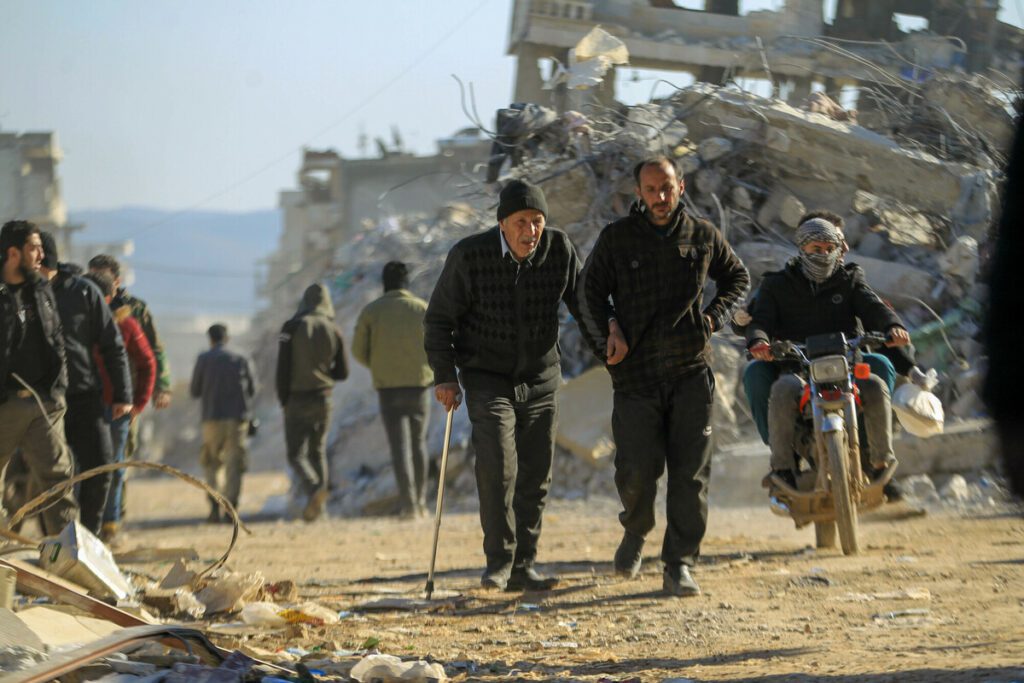HelpAge’s new study exposes the depth of the global neglect of older people. For years, the world has pledged to “leave no one behind.” Yet when the data is examined, the gap between words and action is staggering.
The findings are stark: in humanitarian funding databases, only 0.1% of project titles mention older people, and just 6.5% of project descriptions refer to them. This shows that older people are rarely the direct focus of projects and are often overlooked within broader initiatives.
These numbers represent millions of lives left at risk, uncounted and unseen. They reveal an international system that has consistently failed to recognize older people’s wellbeing, contributions, and rights. And unless we act now, the problem will only grow.
Funding for older people in humanitarian crises
In our new research, HelpAge reveals an international system that has consistently failed to prioritize older people’s wellbeing, rights, and contributions.

Why the Numbers Matter
The world’s population is aging faster than ever before. By 2050, one in six people will be over age 65. In some regions, older people are already among the fastest-growing groups. They are family leaders, caregivers, workers, and pillars of their communities.
Yet global funding tells a different story. These figures show that older people are virtually absent from humanitarian priorities. Response frameworks rarely acknowledge them, even in the face of disasters, conflicts, and displacement.
This is a systemic weakness that undermines resilience, weakens recovery, and deepens inequality.
The Human Cost of Neglect
When older people are excluded from aid and support, the consequences are profound:
- Lives are lost: Humanitarian crises disproportionately affect older people – whether from disruptions to critical services such as healthcare, the impact of extreme weather, or the dangers of displacement. Without targeted assistance, even the most resilient are the first to fall through the cracks.
- Families are affected: In many societies, older people care for children and support households. Supporting them strengthens entire families.
- Communities are undermined: Excluding older people means losing vital knowledge, experience, and leadership. This erodes social cohesion and slows recovery.
Why This Study Matters
HelpAge’s new report brings together evidence on the underfunding of older people, tracking financial flows and analyzing appeals. It highlights the disconnect between demographic reality and humanitarian priorities – and offers a roadmap for change.
The findings show that this is not a problem of capacity or evidence, but of attention and accountability. With the right action, donors and humanitarian actors can turn this gap into an opportunity for impact.
A Call to Leadership
As populations age, the failure to adapt humanitarian funding and policies to older people’s needs will deepen existing inequalities and leave humanitarian systems unprepared for the changing demographics of the future.
Governments, donors, and humanitarian agencies must ask themselves: How can we claim to build inclusive systems if the fastest-growing group in the world is left out? How can we talk about resilience, equity, or human rights when older people remain invisible in funding streams?
The numbers—0.1% and 6.5%—highlight how much work remains to be done, but they also provide a clear benchmark for progress.
Donors at the Heart of Change
Donors play a powerful role in shaping the humanitarian system. Their decisions set priorities that determine who receives support and how inclusive responses are. With consistent investment and a long-term vision, donors can help ensure that humanitarian action reflects the realities of aging populations—one that values the contributions of all people.
The Way Forward
Reversing decades of neglect is essential. HelpAge’s study outlines a roadmap for action:
- Value contributions and uphold rights: Older people must be recognized as equal rights-holders and active contributors in humanitarian responses.
- Adopt inclusive, intersectional approaches: Address both common and unique risks faced by marginalized groups, and build partnerships that ensure responses are holistic, equitable, and rights-based.
- Increase targeted funding: Donors must dedicate specific resources to humanitarian programs supporting older people in crises.
- Mainstream older people’s voices: Every humanitarian appeal, program, and policy must account for this demographic change.
Closing the Gap
Older people are central to the strength and resilience of every community. This study shows that current resources and attention do not yet reflect that reality. But it also shows a clear path forward.
Changing this does not mean reinventing systems. It means adjusting priorities. By making older people visible in funding, policy, and practice, we can ensure humanitarian responses meet the realities of an aging world.
The figures—0.1% and 6.5%—should not define the future. With leadership, collaboration, and commitment, they can be turned around, ensuring that no one is left behind.
